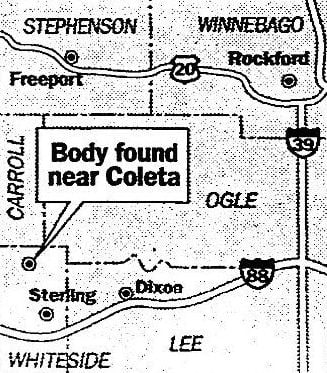Originally published in The Rock River Times.
Memorial Day was set aside to remember and honor those men and women who have died during their service to the United States Military. It became an official holiday in 1868. This area has always been filled with many men and women who joined the fight to protect this country in our times of need. Even before Illinois became a state, we had those who have bravely stood up when the call went out.
Some of those brave men fought in one of the first recorded battles in this area in 1832 during what would become known as the Black Hawk War. Some of the men involved have names that most would recognize including two that would become presidents, Zachary Taylor and Abraham Lincoln.
Black Hawk was a leader of the Sauk tribe in the early 1800’s. He joined the British during the War of 1812 after they made promises to protect the Native Americans land if they helped defeat the Americans. Unfortunately for the Native Americans, the British lost that war and retreated, leaving them to face the consequences.
Black Hawk’s tribe had been using the Rock River Valley for generations. They usually summered in the Rock River Valley and grew corn and other crops before heading across the Mississippi into Iowa for the winter. But that all changed in 1804 when some members of the Fox tribe met with William Henry Harrison and signed a treaty that turned over millions of acres of Native American land to the government. Black Hawk was infuriated by this act and though he eventually signed the treaties, he never trusted that the white man would honor them.
When Black Hawk’s tribe returned to their summer home in 1831 at the mouth of the Rock River (down around Rock Island, Illinois) they were met with an unpleasant surprise. White settlers had disregarded the boundaries set up by the treaties and claimed the land for themselves.
The settlers grew uneasy with the Native Americans return and called for action by Governor John Reynolds. He ordered the army to round up a militia of volunteers to protect the area for the settlers. By the time the regiment arrived in the area, Black Hawk had moved his people back across the Mississippi. The militia hoped to deter the tribe from returning by burning their village.
Black Hawk’s people tried to live off the land in Iowa but his people were struggling for food. He felt he had no choice but to return to Illinois where he knew they could grow the crops they would need to make it through the winter. He rounded up 700 warriors and tried to recruit other tribes to stand with him. Historians point out that they don’t believe Black Hawk really wanted a war because he also brought women and children.
The white settlers were even more frightened with their return and once again Reynolds called for volunteers. This time over 1,800 men signed up. These men, joined by the regular army all met at Dixon’s Ferry (the current day Dixon.)
Two brigades (totally about 275 men) under the command of Major Isaiah Stillman left to search the area called Old Man’s Creek the site of the present day Stillman’s Valley. They set out on May 13, 1832 hoping to meet up with the Native Americans and convince them to return to Iowa. Historians who have studied this mission say that the leaders of these brigades made two tactical errors. One, was the camp was set up with their backs to the creek and the second was that they brought a lot of whiskey. Some of the men’s hatred for the Native Americans had been fueled by that liquor. They incited others with stories of women and children butchered and mutilated by the “savages”.
Black Hawk saw the men march into the valley and set up camp. He was severely outnumbered and he had to know that a battle with the better armed soldiers would be futile. Black Hawk later told the story of the battle in his autobiography, “Black Hawk: An Autobiography”. He stated that he knew that the White Men were fierce fighters who were deadly aims with their rifles. He stated that he was shocked when he realized that some of the men were drunk.
Black Hawk sent four unarmed braves bearing a white flag in toward the militia encampment. After the devastating result of this day, some men would claim that the whole Black Hawk War could have avoided except for the actions of a few of the men. Those men, whether spurred on by the whiskey or by the horror stories, opened fire on the four braves, killing two immediately. Black Hawk saw what was happening and moved forward to protect his men.
Black Hawk’s warriors knew they were outnumbered and that they needed to make their small band of 40 seem like much more. They rode into the grove of willows whooping and slamming their tomahawks into the trees. Some even made death moans to make it seem like many of the white men were being killed.
This created chaos in the encampment. Soldiers and volunteers alike broke camp, cutting their horse’s bridles free as they leaped on their backs. The scene of the battle spread out over the once quiet area for miles as the brigades struggled to out run the attack.
Captain John Adams saw the panicked men flee and called for his men to stand with him. Some of the men from his regiment fell into line next to him. These men fired on the warriors slowing down their attack long enough to allow the retreating men to escape.
The retreating men were so frightened that they didn’t slow their horses until they had ridden all the way back to Dixon Ferry. Some didn’t stop until they reached their own homes, one made it all the way to Galena before stopping. Those that returned to Dixon Ferry reported the attack and another brigade, this one including Abraham Lincoln quickly left for the battle scene.
The reinforcement brigade quickly turned into a funeral brigade. By the time they reached hill top, they could see bodies. Captain Adams and eight of his men lay on the hill top. All of them had been horribly mutilated. All of the men on the hill were buried in one mass grave. Three others were found in the surrounding area and buried where they fell. One man’s grave located many years later and he was reburied with his fellow soldiers at the top of the hill. The other two have been searched for but so far have eluded discovery.
One witness to the battle shared a very moving story. A young soldier named Corporal James Milton was riding his horse to protect some of the men who were trying to escape. James noticed one older militia member struggling to keep up with the others. This man had been running away but became completely exhausted. James slid from his saddle and gave his horse to the man. The funeral brigade came upon James’ body next to the dead bodies of two Native Americans. James had been mutilated, his head scalped.
The other men that died that day:
Captain John G. Adams
Private Tyrus M. Childs
Private James Doty
Private Joseph Draper
Corporal Bird W. Ellis
Private James B. Farris
Private David Kreeps
Private Zadoc Mendinall
Gideon Munson
Private Major Isaac Perkins
Sgt. John Walters
The hill was soon given the name “Massacre Hill” and the story of what happened there faded in people’s memories. The land was owned by Dr. E. P Allen until 1899 when he decided to sell it. The county realizing what would be lost, purchased the land to set aside for a monument to the men who died there. In 1902, a 50 foot monument was finally built to honor those men who died that day.
There is no monument to the Native Americans who were also lost that day. But I think that Abraham Lincoln’s words that were sent to Lydia Bixby (a widow who lost five sons in the Civil War) are fitting for all who have lost family members during any battle since this country began.
“I pray that our Heavenly Father may assuage the anguish of your bereavement, and leave you only the cherished memory of the loved and lost, and the solemn pride that must be yours to have laid so costly a sacrifice upon the altar of freedom.”
–Nov. 21, 1864
Copyright © 2019 Kathi Kresol, Haunted Rockford Events






